Can Cats Eat Flan? A Complete Guide Step-by-Step
As cat owners and pet lovers, we often find ourselves wondering about the variety of human foods that our feline friends can safely enjoy. One question that might pop up in our minds is “Can cats eat flan?“
This sweet, custard-based dessert is a favourite of many people around the globe, but is it safe for our cats? It’s crucial to know what our little furry friends can and cannot eat, as their dietary requirements and restrictions are vastly different from ours.
In this comprehensive Guide, We will discuss whether is it safe for cats to eat flan or not, as well as, we will explore the risks and benefits of flan on cat’s health. So let’s go into the world of cats and flan.
What Is Flan?
Flan is a popular dessert that originated in Spain but has been adopted and adapted by many cultures worldwide. It’s a delightful custard dish typically made using simple, everyday ingredients, including eggs, sugar, and milk. The process of making flan involves whisking these ingredients together to form a creamy mixture.
This mixture is then cooked gently in a water bath to ensure a perfect, smooth texture. Once cooked and cooled, the flan is flipped over to reveal a delightful caramel coating that adds an extra touch of sweetness. Its creamy texture and caramel flavour make it a favourite among dessert lovers.
Can Cats Eat Flan?
The simple answer is cats should not eat flan. While it’s not immediately toxic, flan is full of sugar and dairy products, which are not suitable for most felines. Many cats are lactose intolerant, and consuming dairy can lead to digestive issues like diarrhoea or vomiting.
Additionally, the high sugar content found in flan is not beneficial for a cat’s health as cats cannot metabolize sugars as efficiently as humans. Too much sugar can lead to obesity and diabetes in cats, both of which can have serious health implications. Therefore, it’s best to avoid giving your cat flan and stick to a vet-approved diet.
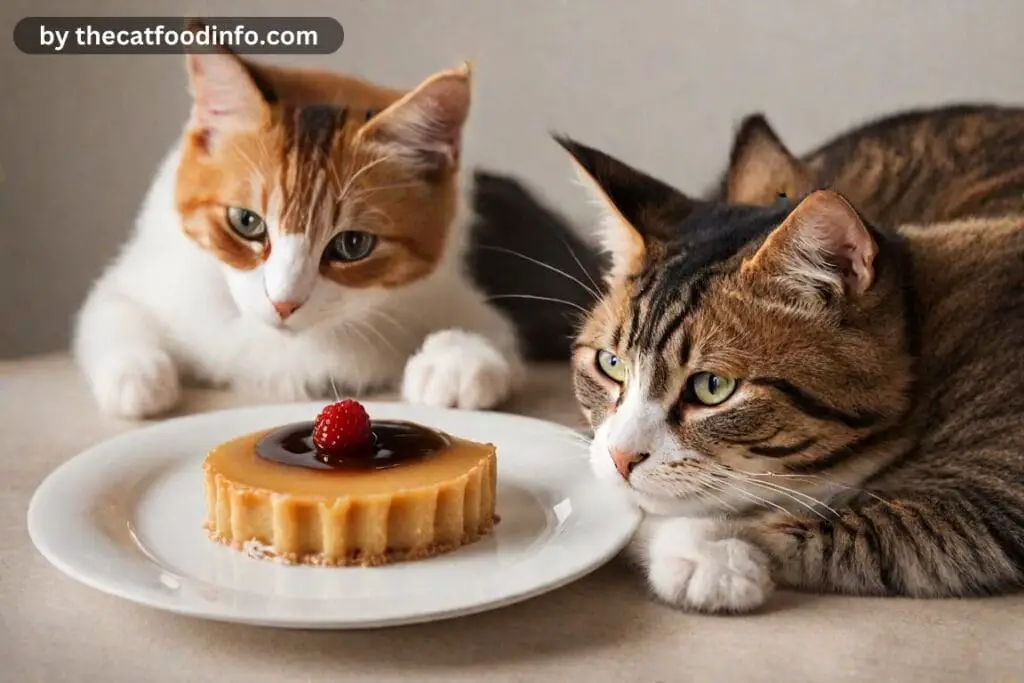
Potential Health Risks Of Flan To Cats
Keep these risks in mind before feeding flan to your cats.
1. Digestive Issues
As mentioned earlier, many cats are lactose intolerant. Consuming flan which contains milk can cause discomfort and lead to digestive issues such as diarrhoea and vomiting.
2. High Sugar Content
Flan is high in sugar, which cats cannot metabolize efficiently. A diet high in sugar can result in obesity, which in turn may lead to other health complications.
3. Risk of Diabetes
Prolonged consumption of sugar-rich foods like flan can lead to diabetes in cats. Diabetes in cats requires lifelong care, including regular insulin injections and frequent veterinary visits.
4. Obesity
Flan is a calorie-dense dessert. Regular consumption can easily result in weight gain and obesity, which can predispose your cat to other health issues like joint problems and heart disease.
5. Dental Problems
High sugar content in flan can lead to dental problems in cats, including tooth decay and gum disease.
6. Nutrient Imbalance
Flan does not provide the nutrients that cats need. Regular consumption could lead to a nutritional imbalance, which can cause health problems in the long run.
7. Allergic Reactions
Some cats could be allergic to the ingredients used in flan, such as eggs or milk, leading to allergic reactions.
8. Lethargy
High sugar content can lead to spikes and crashes in energy levels, causing your cat to become lethargic.
9. Behavioural Changes
Changes in diet can lead to changes in behaviour. A sudden increase in sugar intake from eating flan can make your cat hyperactive, restless, or unusually aggressive.
10. Decreased Lifespan
Ultimately, all these health risks could potentially reduce a cat’s overall lifespan. It’s essential to stick with a vet-approved diet to ensure a long, healthy life for your feline friend.
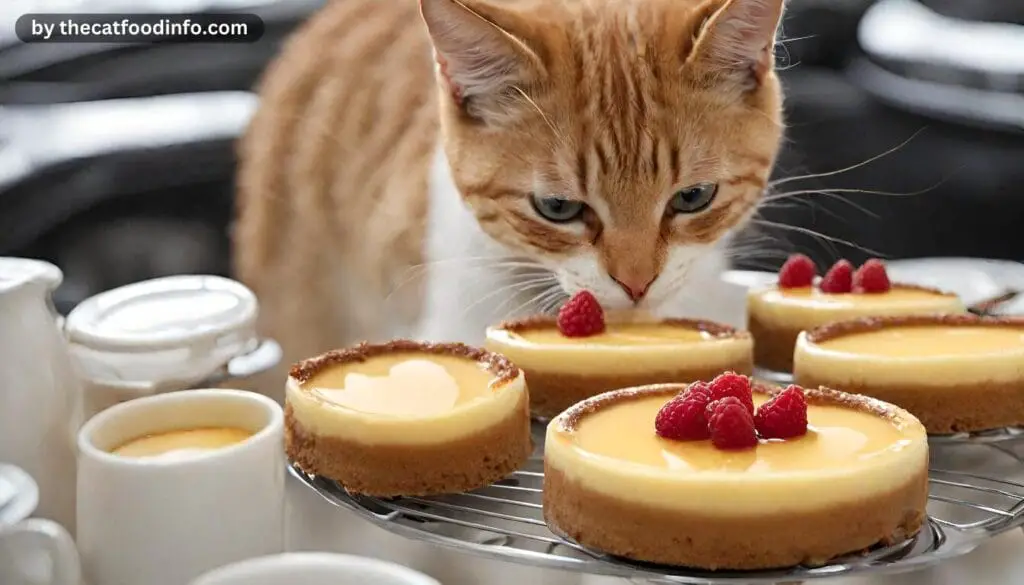
Is Flan Beneficial For Cats?
While flan is a delicious dessert for humans, it offers no significant health benefits for cats. Cats are obligate carnivores, meaning their diet should primarily consist of meat. They require certain nutrients, like taurine, arginine, and arachidonic acid, that are only found in animal products. The primary ingredients in flan – milk, sugar, and eggs – do not provide these essential nutrients.
Furthermore, the high sugar and lactose content can lead to medical conditions like obesity and lactose intolerance. So, despite its taste, flan is not beneficial for your feline friend’s diet and health.
How To Stop Cats From Eating Flan?
Follow these steps to save your cats.
Step 1: Understand Your Cat’s Dietary Needs
Understanding your cat’s dietary needs is the first step. Remember, cats are obligate carnivores and require a diet rich in animal proteins. They do not need sugar or dairy products, both of which are abundant in flan.
Step 2: Keep Flan Out Of Reach
Always keep flan and other desserts out of your cat’s reach. If your cat cannot get to the flan, they can’t eat it. This might mean storing it in a refrigerator or a closed cabinet.
Step 3: Close Supervision
When you are eating flan or have it out, make sure to keep a close eye on your cat. Cats are curious by nature and may try to steal a taste if given the opportunity.
Step 4: Do Not Encourage
Never encourage or allow your cat to eat flan, even in small quantities. It’s not a treat for them. It’s a human dessert that can harm their health.
Step 5: Provide A Balanced Cat Diet
Offer your cat a balanced diet that fulfils all their nutritional needs. High-quality cat food usually meets these requirements. If your cat is well-fed and satisfied, they are less likely to show interest in human food.
Step 6: Distract Your Cat
If your cat shows interest in your flan, distract them with their favourite toy or give them their cat-friendly treat.
Step 7: Consult A Vet
If your cat has consumed some flan, monitor them closely for any adverse reactions. If they show signs of discomfort or become sick, consult your vet immediately.
Remember, our cats depend on us to make the best dietary choices for them. Stick to cat-approved food and treats, and keep your flan for yourself.

What Happens If A Cat Eats Flan Too Much?
If a cat consumes flan excessively, it could lead to serious health consequences over time. Given their inability to process high levels of sugar and lactose, cats may experience immediate digestive discomfort, including bloating, vomiting, and diarrhoea. Over time, this could result in chronic digestive issues and malnutrition, as their bodies struggle to absorb essential nutrients.
Moreover, the high caloric content of flan can contribute to obesity in cats, a condition that is associated with a host of other health problems, such as arthritis, diabetes, and liver disease. Obesity can also put undue stress on a cat’s heart, resulting in heart disease or even heart failure.
Excessive consumption of sugar can also lead to feline diabetes, a serious condition that requires ongoing veterinary care and can significantly reduce a cat’s quality of life.
Unsuitable foods like flan can also lead to dental problems in cats. The sugar in flan can lead to plaque build-up on a cat’s teeth, which if left untreated, can develop into painful dental diseases like periodontitis and tooth decay.
Lastly, cats that develop a taste for flan may start refusing their regular, nutritionally balanced cat food. This can lead to nutrient deficiencies, as flan does not provide all the necessary vitamins and minerals that cats need for optimal health. Such deficiencies could lead to a weakened immune system, making your cat more susceptible to infections and diseases.
In conclusion, while a small lick of flan might not harm your cat, regular or excessive consumption can lead to serious health issues, some of which can be life-threatening. It’s always best to keep flan, and other human desserts, out of your cat’s reach. Stick to cat food and treats that are specifically formulated to meet your feline friend’s unique dietary needs.
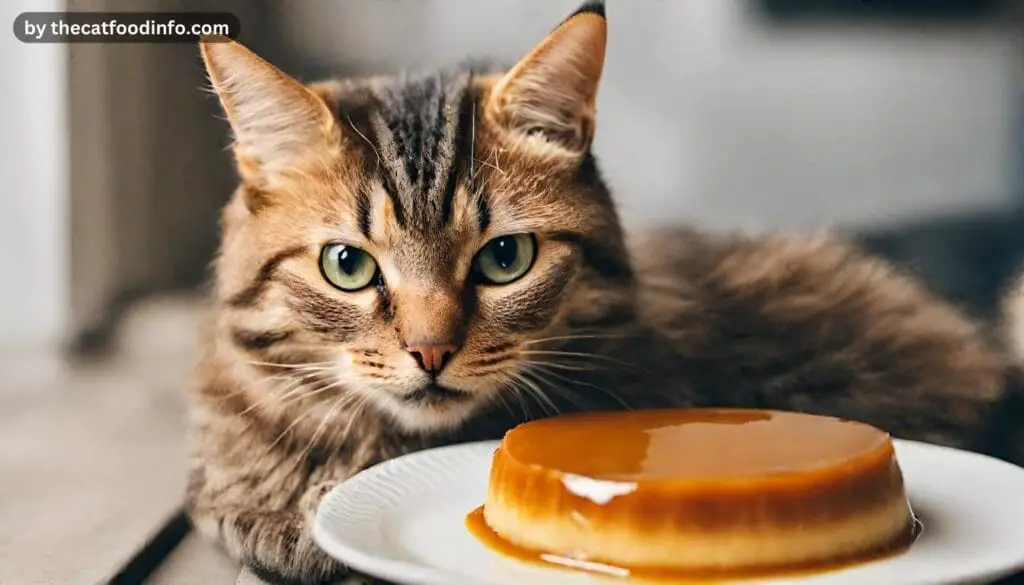
How To Make Flan Cat-Friendly?
Follow these 7 steps to make flan cat-friendly.
Step 1: Select Appropriate Ingredients
To make a cat-friendly flan, start by selecting suitable ingredients. Typical flan ingredients like sugar and dairy are not suitable for cats. Instead, opt for cat-safe alternatives such as pumpkin puree or sweet potatoes, which can give a similar texture without harmful effects.
Step 2: Use Cat-Safe Sweeteners
Instead of sugar, consider using cat-safe sweeteners. However, remember that cats do not have the same sweet tooth as humans. Excessive sweetness is not only unnecessary but can also be harmful.
Step 3: Go Light On Dairy
If you want to include a dairy element, ensure it’s lactose-free. Cats are notoriously lactose intolerant, so regular milk or cream can upset their stomachs. A small amount of lactose-free milk or cream can give your flan the creaminess you’re looking for without causing discomfort to your cat.
Step 4: Add Protein
Remember, cats are carnivores and need protein in their diet. Consider adding a source of animal protein to your flan. You can use pureed chicken or fish as an ingredient.
Step 5: Baking Process
When baking your flan, ensure it is thoroughly cooked to avoid any harmful bacteria. Also, remember to cool it down completely before serving it to your cat.
Step 6: Portion Control
Even if you have made a cat-friendly flan, it should not constitute the majority of your cat’s diet. It can be offered as a treat, which means small, infrequent servings.
Step 7: Monitor Your Cat
After introducing any new food to your cat’s diet, always monitor them for any signs of allergic reactions or discomfort. If you notice anything unusual, contact your vet immediately.
Remember, even with these adjustments, flan should be considered a treat and not replace a balanced, nutritious cat diet. Always consult with your vet before making significant changes to your cat’s diet.
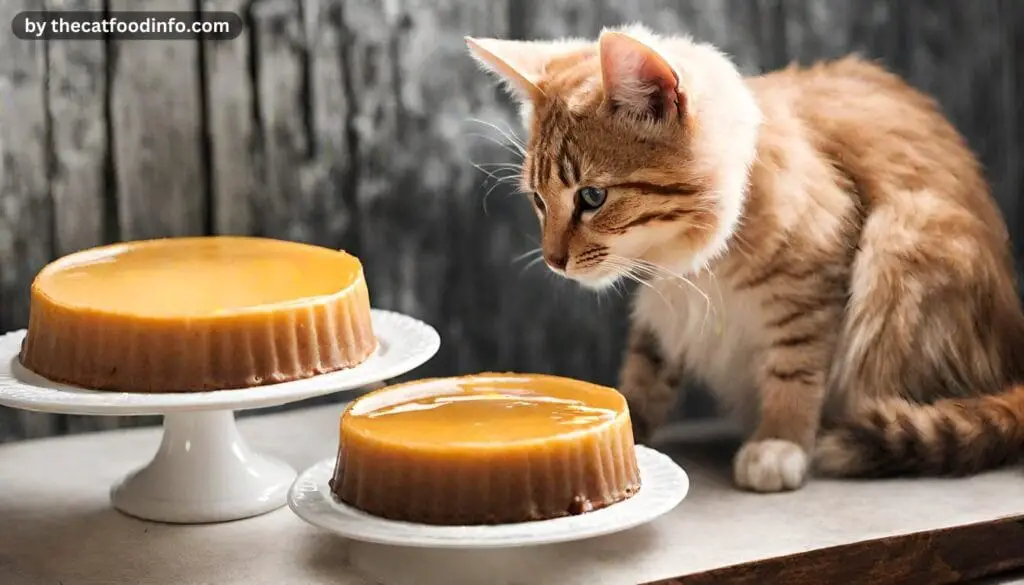
Conclusion
In conclusion, while flan is a delightful dessert for humans, it’s not suitable for our feline friends due to its high sugar and lactose content. Over time, consuming flan can lead to a variety of health issues in cats, such as obesity, diabetes, and even heart disease. However, if you’re keen on sharing the joy of flan with your cat, consider making a cat-friendly version with suitable substitutes and portion control.
Always remember to monitor your cat after feeding new foods and consult your vet if you observe any discomfort. Keep your cat’s diet balanced and nutritious, and reserve treats as just that – occasional treats. Your cat’s health and well-being should always be the prime focus.
FAQs
Can Cats Eat Flan In A Small Amount?
Yes, a small amount of flan is typically safe for cats to consume occasionally, but it’s not recommended due to the high sugar and lactose content.
What Signs Should I Look Out For If My Cat Accidentally Eats Flan?
If your cat accidentally eats flan, watch for symptoms like bloating, vomiting, diarrhoea, refusal of regular food, unusual lethargy, or any other signs of discomfort. If any of these are observed, contact your vet immediately.
Can I Feed My Cat Flan Made With Artificial Sweeteners Instead Of Sugar?
No, artificial sweeteners can be harmful to cats and should be avoided. Always consult with your vet before introducing new foods into your cat’s diet.
Are There Any Safe Alternatives To Flan As A Treat For My Cat?
Yes, treats specifically manufactured for cats are safe and recommended. These can be found at pet stores.
Can Kittens Also Consume The Cat-Friendly Flan?
Kittens should stick to a diet specifically designed for their developmental needs, so it’s best to avoid cat-friendly flan for them.
How Often Can I Give My Cat The Cat-Friendly Version Of Flan?
The cat-friendly flan should be served to your cat only as an occasional treat, no more than once a week.
What Other Human Foods Are Dangerous For Cats Similar To Flan?
Aside from flan, human foods that are dangerous for cats include chocolate, onions, garlic, alcohol, caffeine, grapes, raisins, and anything containing the sweetener xylitol.

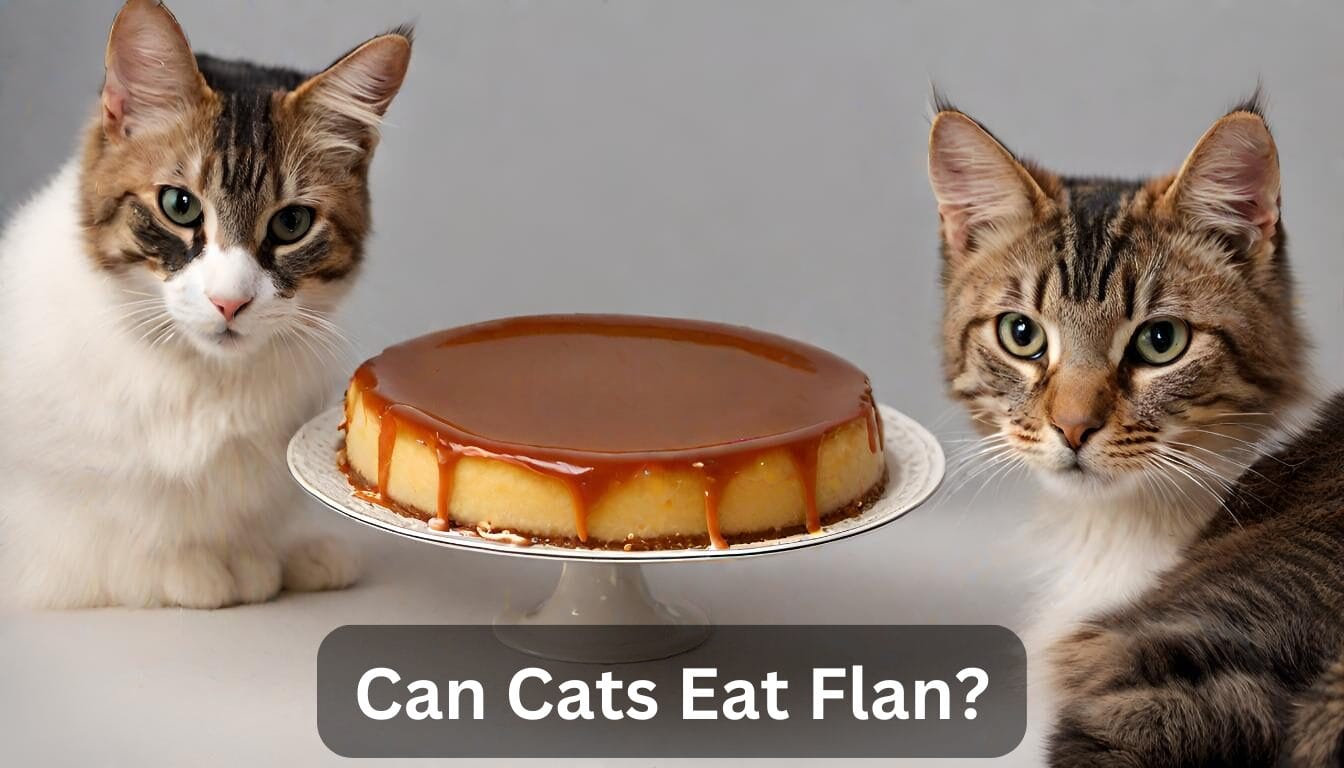
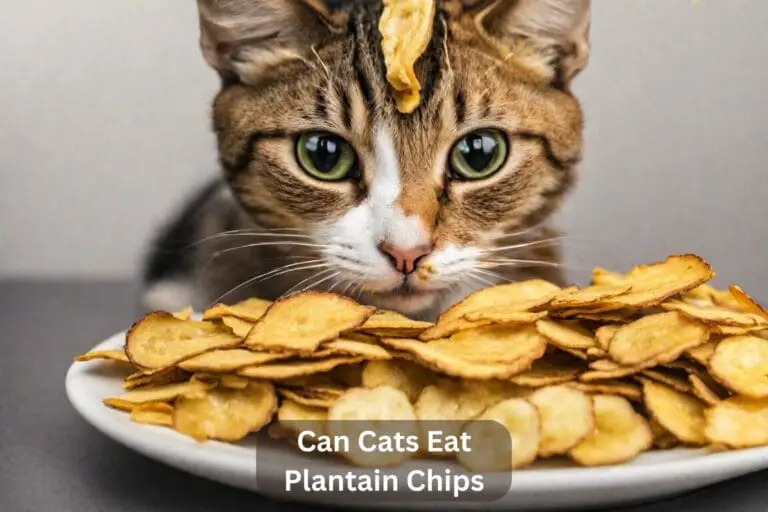
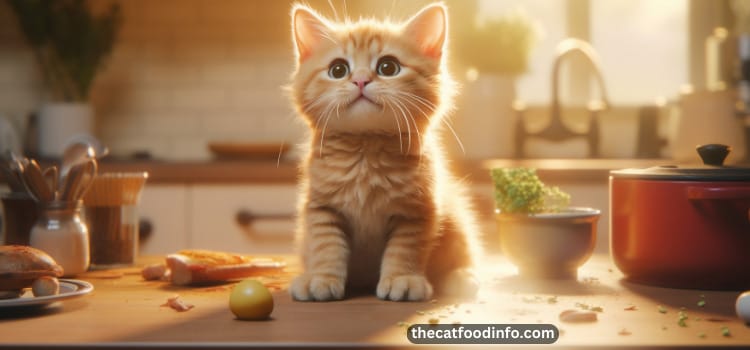
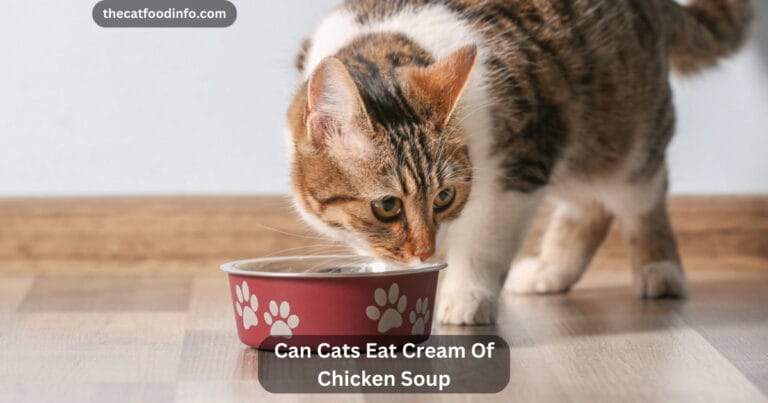
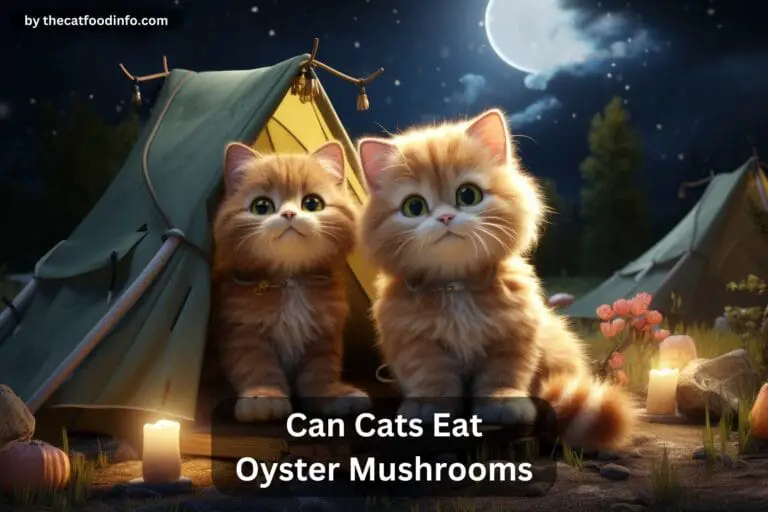
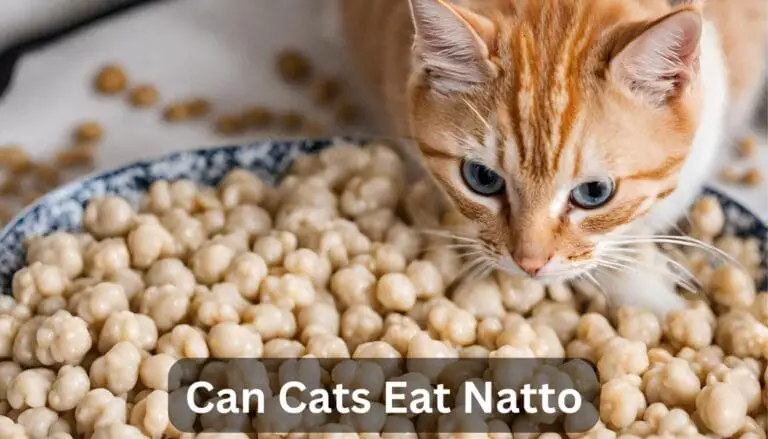
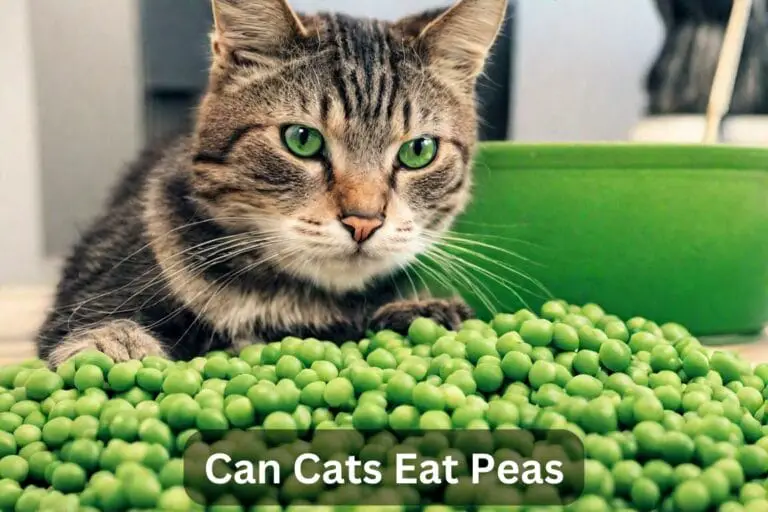
3 Comments